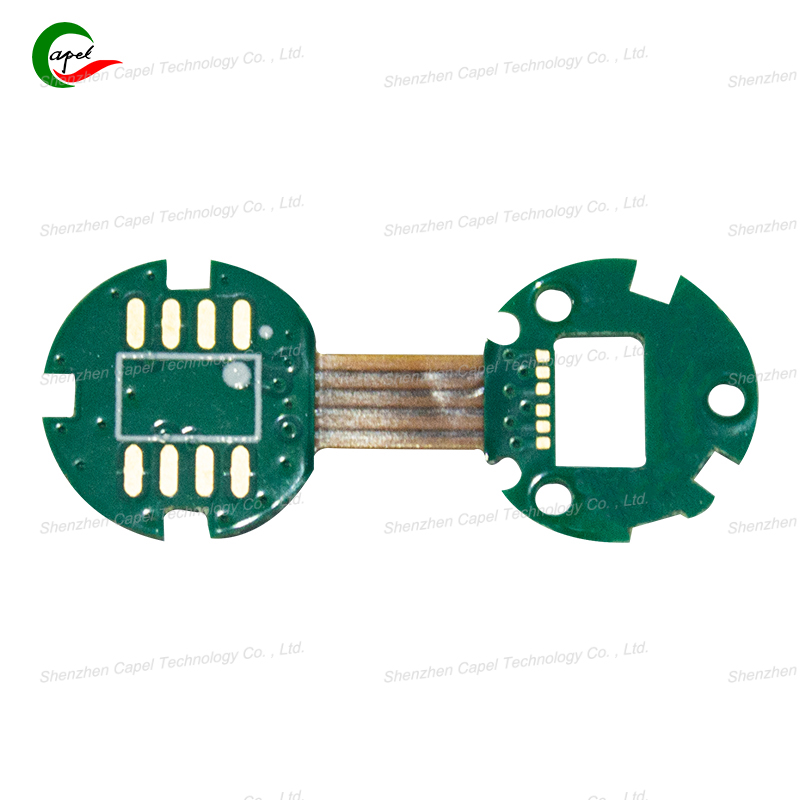Lamination is the "glue" that holds rigid-flex PCBs together—literally. It’s the step where flexible polyimide (PI) layers, rigid FR-4 sections, and adhesive are pressed into one seamless board. Do it right, and you get a durable PCB that bends without breaking and stays strong for years. Do it wrong, and you’ll end up with delamination, bubbles, or weak spots that ruin the whole board.
For anyone working with rigid-flex PCBs, understanding lamination quality control is key. Below’s a simple breakdown of how to get lamination right, common defects to watch for, and why it all matters.
Think of lamination as "making a sandwich" for your PCB:
-
The "bread": Rigid FR-4 layers (for mounting components) and flexible PI layers (for bending).
-
The "filling": Heat-resistant adhesive (usually epoxy) that bonds the layers together.
The process uses heat (180–220°C) and pressure (200–400 psi) to melt the adhesive and fuse everything into a single board. It sounds straightforward, but even small mistakes here cause big problems.
Quality starts before the press turns on. Focus on these three steps to avoid defects:
-
Prep the layers (no dirt, no moisture)
Even a tiny speck of dust or drop of moisture will create a bubble during lamination. Clean FR-4 and PI layers with alcohol before use, and bake them at 120°C for 2–4 hours to remove moisture—this is non-negotiable for humid environments.
-
Choose the right adhesive (match to materials)
Not all adhesives work for every combination. Use epoxy adhesive for bonding PI and FR-4—it handles heat and flexibility better than acrylic. Pick the right thickness too: 50μm adhesive for most boards, 75μm if you need extra bond strength.
-
Control press settings (heat + pressure = balance)
Too much heat melts the PI; too little leaves adhesive uncured. Too much pressure crushes thin layers; too little causes poor bonding. Stick to the adhesive maker’s specs—e.g., 200°C for 90 minutes at 300 psi—and calibrate the press weekly to keep settings accurate.

Even with prep, defects happen. Here’s how to spot and prevent the most frequent ones:
-
Delamination (layers peeling apart)
Why it happens: Moisture in layers, under-cured adhesive, or wrong press temperature.
Fix: Bake layers thoroughly, check adhesive expiration dates, and verify press heat with a thermometer.
-
Bubbles (air pockets under the surface)
Why it happens: Dust on layers, trapped air during stacking, or too-fast pressure increase.
Fix: Clean layers in a dust-free area, stack layers slowly to let air escape, and ramp up pressure gradually (over 10–15 minutes).
-
Uneven bonding (weak spots at edges)
Why it happens: Uneven pressure distribution, or layers not aligned properly.
Fix: Use a pressure plate to spread force evenly, and align layers with guide pins before lamination.
Good lamination isn’t just about avoiding defects—it directly impacts how the PCB performs:
-
Durability: A well-laminated board bends 10,000+ times without peeling, while a poorly laminated one cracks after a few hundred bends.
-
Signal integrity: Bubbles or delamination create gaps that disrupt electrical signals, leading to glitches in devices like smartphones or medical tools.
-
Heat resistance: Properly cured adhesive stands up to high temperatures (125°C+), while uncured adhesive softens and fails.
Rigid-flex lamination is where flexibility and strength meet—and it’s make-or-break for PCB quality. By prepping layers, choosing the right adhesive, and controlling press settings, you can avoid bubbles, delamination, and weak spots.
At the end of the day, lamination quality isn’t a "detail"—it’s the foundation of a reliable rigid-flex PCB. Cut corners here, and even the best design will fall short. Prioritize these steps, and you’ll get boards that work as hard as the devices they power.
Related Link:
